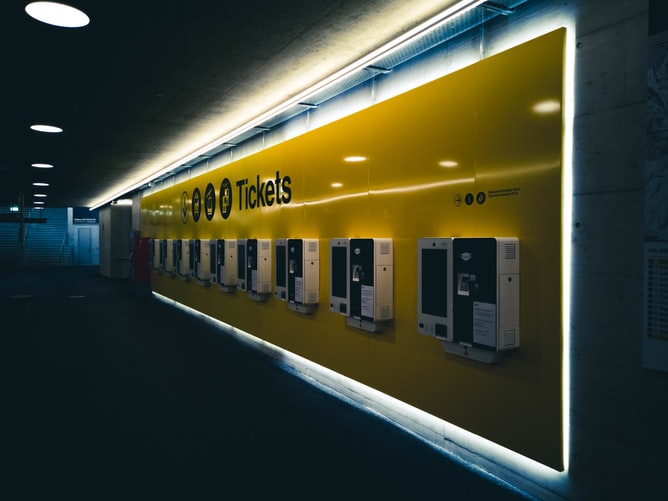
How Digitalization in Tourism can Empower Travellers Amidst Covid-19
By Andrew Murphy
Buyer behaviour has undergone a substantial transformation due to technological advancement; a process that’s been accelerated during the global pandemic. Pre-COVID-19, acquiring services and purchasing online was preferable for speed and convenience. The pandemic has made eCommerce essential. Nowhere is this shift more noticeable than in the way consumers use the internet to plan and book travel, accommodation, auxiliary services and attractions.
Worldwide, e-tourism is nothing new. This sector was one of the first to appreciate the value of Information and Communications Technology (ICT). Computerised Reservation Systems and global distribution networks have long been utilized. The tourism industry was also quick to understand the value of experience-based marketing, securing global consumer interest in leisure and luxury purchases via the internet.
Due to COVID-19, consumers are now even more reliant on digitalised research and transactions. This has challenged the tourism sector to take a leap forward through digital transformations to operate successfully post-pandemic.
It’s all about understanding tourist psychology
The primary concern of providers is to base their e-tourism on meeting the needs of modern consumers who use the internet for information, personalised negotiation, transactions, buyer reassurance and convenience.
According to Google, people visit 1.5 billion destinations worldwide every month. HubSpot further highlights that over a two-year period, mobile searches which included a destination “near me today/tonight” grew by an astonishing 900%. Clearly, tourism providers must have a strong digital platform and robust SEO.
Personalised Negotiation
Consumers aim for personalised travel experiences, even from companies offering package deals. They want to tailor their trips based on their own preferences and prefer a semblance of individualised communication.
Easy Transactions
There is a high value placed on being able to pay online in advance. The pandemic has shifted online payments from being a preference to a necessity ensuring safety. The proliferation of global electronic payment options has led many consumers to find physical payment systems more impractical and inconvenient, leading to the replacement of credit card transactions with digital methods.
Buyer Reassurance
Travellers resort to tourism-related review sites and social media platforms to influence and guide their transactional choices. This is supported by the way tourists increasingly share their experiences online, including live streams and post-holiday videos.
Booking Flexibility
Since the onset of the global pandemic, flexibility with consumer reservations is another important factor in buyer reassurance. When a destination is suddenly added to a government travel red-list, the consumer’s eagerly awaited trip is no longer possible. Disney has been an early mover in this regard, providing flexibility with consumer reservations, offering alternative dates at no extra cost. This reduces consumer anxiety during the booking process, thus improving sales.
Point of Delivery Efficiencies
Tourism psychology has been so imprinted by technology. Consumers expect to visit attractions in a pre-booked time slot, with minimal queuing, and to check in swiftly using electronic methods. They also expect information delivery to be technologically facilitated.
Convenience
Consumers are now technology-immersed and impatient! For instance, when visiting a website, they look for a compelling brand and assurance that their needs can and will be satisfied. This often requires the use of LiveChat or Chatbot technology to allow for direct communication. Users are also happy to find providers offering a variety of associated services, such as deals with nearby hotels or travel companies that get them door to door.
Over 50% of all online transactions are mobile-based, and this figure is growing fast. E-tourism providers face the necessity of having well-rounded responsive websites and booking systems that perform well aesthetically and functionally on small screens.
Other ways providers need to respond to e-Tourism
E-tourism – and communication technology in general – have not only empowered consumers but also created important benefits for tourism and service companies as well.
Companies who are offering virtual tours on a high calibre website with efficient operational systems have a competitive edge. They can further achieve economies of scale upon setting up call centres and information centres to attract and support bookings, as well as digital marketing campaigns to promote special offers.
Some emerging tourism markets are receiving a boost at a national level, with government-backed digital travel portals offering consumers a wide range of quality assured tourism products.
The internet of things (IoT) means that service companies can monitor visitor behaviour on-site, obtaining valuable data to support business improvements. IoT makes it possible to support a steady flow of visitors during the day by assigning time slots and controlling how many people have access to private and public spaces at any given time.
Tourism providers also have improved tools and systems to complete their supply chain arrangements using digital methods. This includes using global electronic money platforms that create greater transparency and cost control when different currencies are involved.
By forming partnerships based on digitalised interaction, e-tourism providers can cross-sell services and goods to consumers, diversifying their revenues.
Post-pandemic Survival
The outbreak of the pandemic and its repercussions imply that buyers now want and rather expect – reassurance that providers can rise to the challenges posed by COVID-19 and that their offerings are not just limited to new safety systems, but also responsive policies. Even with those in place, international tourism companies are struggling to survive the massive dip in revenue that they’ve experienced during the pandemic.
